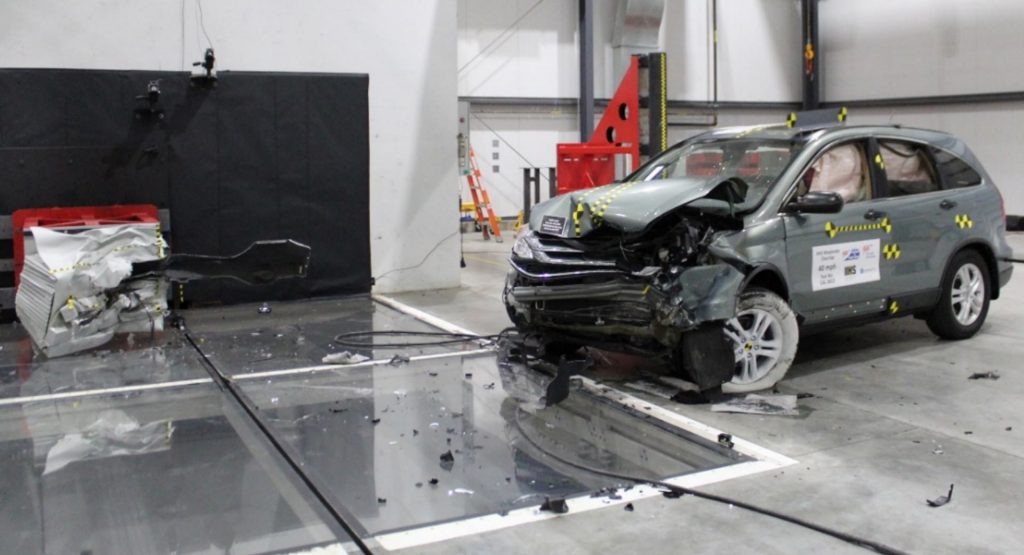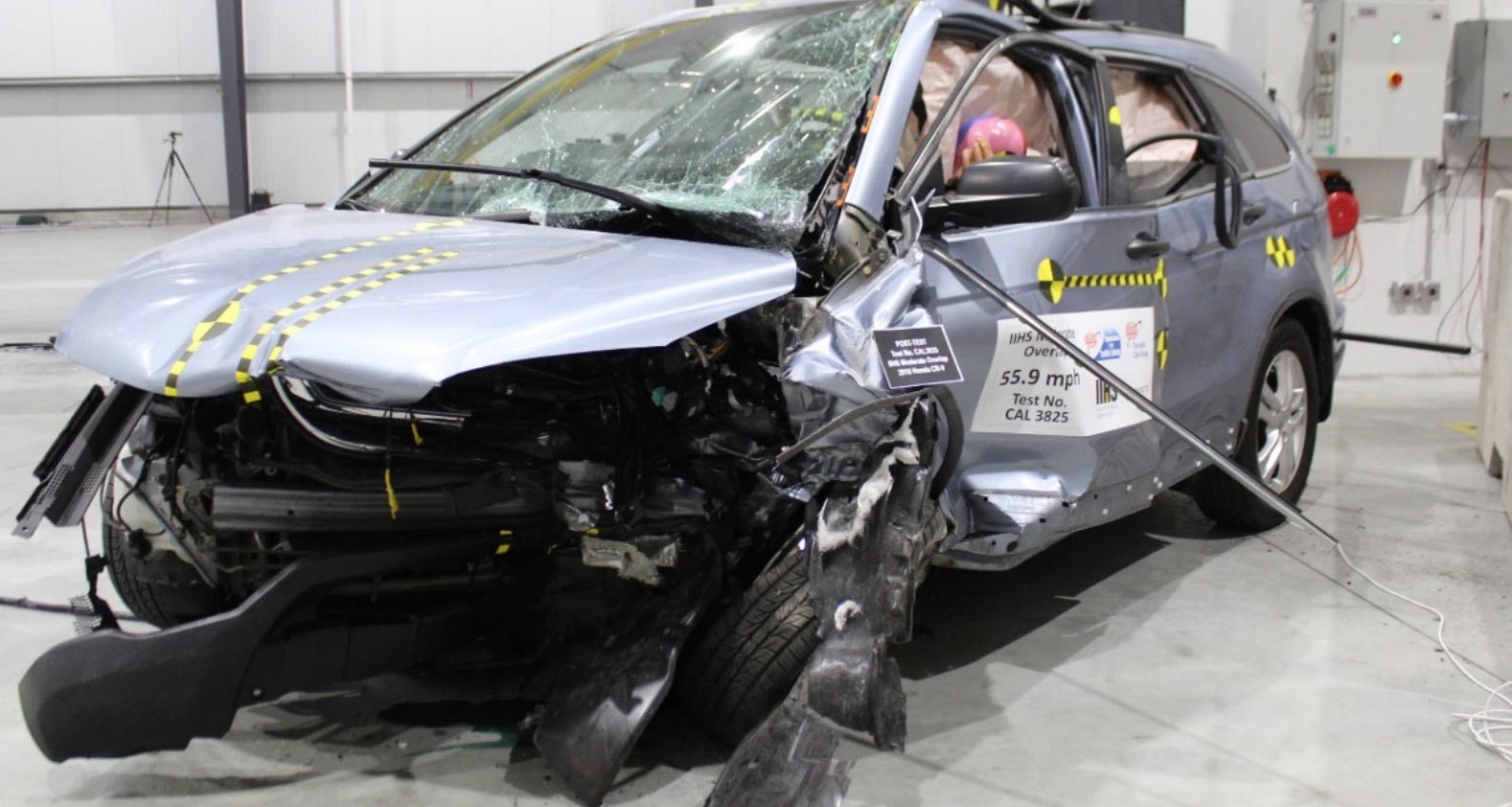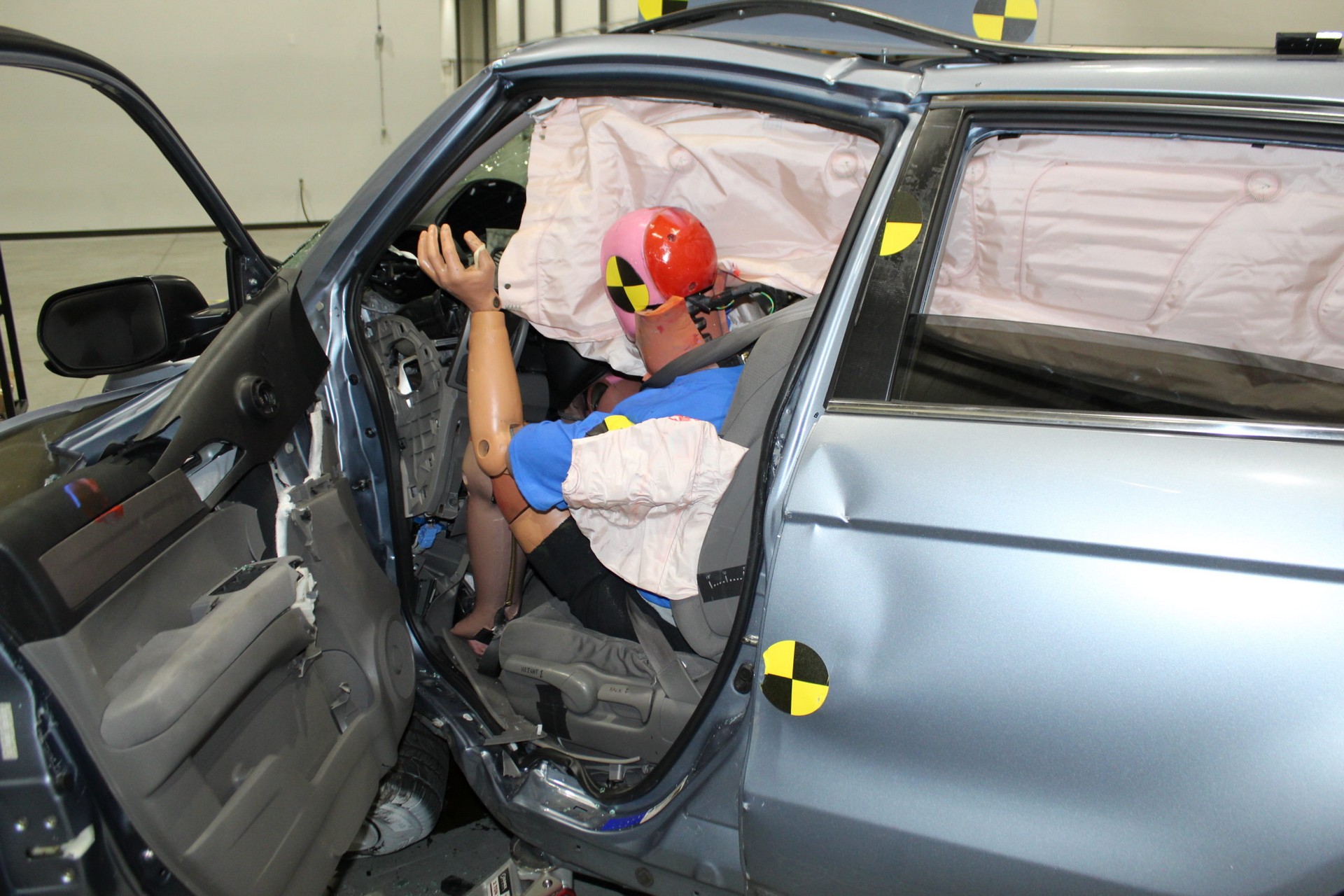Speeding is a fact of life as many drivers travel faster than the posted speed.
To compensate for this, some state and local governments have been raising speed limits to better reflect how fast people are actually traveling. However, AAA is cautioning against this as they say drivers will still exceed the speed limit and slightly higher speeds are enough to increase a driver’s risk of severe injury or death.
As part of a study with Humanetics and the Insurance Institute for Highway Safety, the trio crashed three 2010 Honda CR-V EX crossovers. The model was selected because it earned the top rating in the IIHS’ moderate overlap front test and represents the average U.S. vehicle age of 11.8 years.
Also Read: Want Out Of A Speeding Ticket? Just Asking Might Be Enough
The crashes were conducted at 40, 50 and 56 mph (64, 80 and 90 km/h) and as speeds increased, “researchers found more structural damage and greater forces on the dummy’s entire body.” While this isn’t terribly surprising, AAA noted the 40 mph (64 km/h) crash resulted in minimal cockpit intrusion.
At 50 mph (80 km/h), the impact caused “noticeable deformation of the driver side door opening, dashboard and foot area.” While a 6 mph (10 km/h) increase not sound like much, the 56 mph (90 km/h) crash “significantly compromised” the CR-V’s interior and sensors in the crash test dummy indicated severe neck injuries as well as a likelihood of bone fractures in the lower leg.
Furthermore at 50 and 56 mph (80 and 90 km/h), the dummy’s head smashed into the steering wheel despite the airbag deploying. Measurements indicated this caused a “high risk of facial fractures and severe brain injury.”
According to IIHS President Dr. David Harkey, “Cars are safer than they’ve ever been, but nobody’s figured out how to make them defy the laws of physics.” He added, “The faster a driver is going before a crash, the less likely it is that they’ll be able to get down to a survivable speed even if they have a chance to brake before impact.”
Instead of raising speed limits, policymakers are being urged to use “proven countermeasures” to deter speeding such as high-visibility enforcement and speed cameras. AAA’s director of traffic safety advocacy and research, Jake Nelson, also noted infrastructure changes can be used to “calm traffic flow appropriately so that posted speed limits are followed.”
While a number of people would like to see higher speed limits, an IIHS study from 2019 suggested that rising speed limits have cost nearly 37,000 lives over 25 years.






